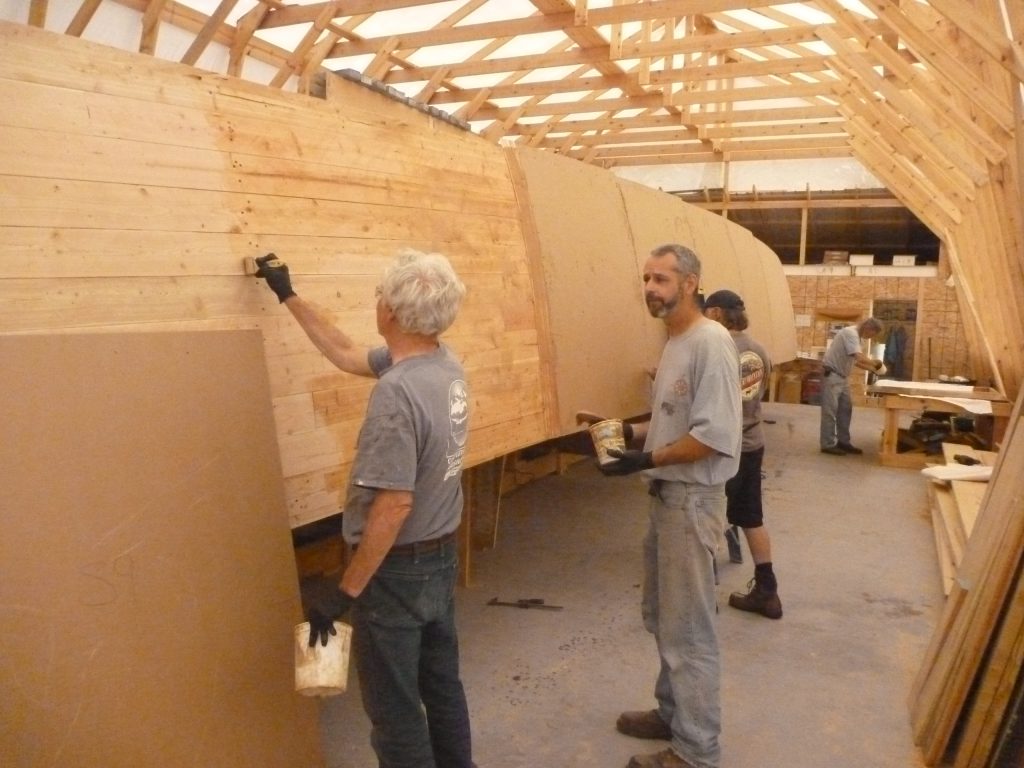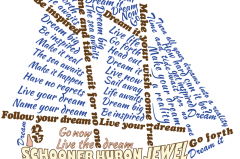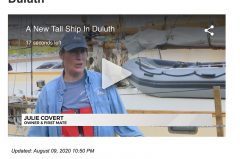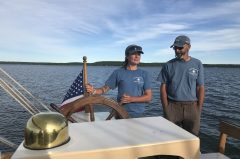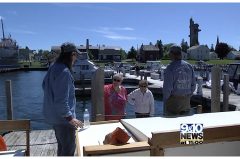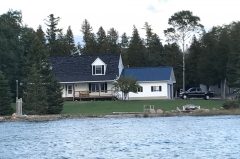July 26, 2016
This last month we planked Huron Jewel with 2” x 6” tongue and groove Douglas fir boards 16 feet long, applying epoxy to their edges and where they crossed the frames and bulkheads. There is a time lapse video of the three days spent planking online at https://ditallship.com/2016/07/17/plankingaschooner/https://ditallship.com/2016/07/17/plankingaschooner/
These planks fit together to make a hull with fair curves over the frames as they hold to each other and don’t have to be edge-fastened because of the interlocking nature of the tongues and grooves. This form of strip-planking was afterwards overlaid with smooth-faced medium density overly (MDO) plywood to make an easily smoothed outer surface and to hold the planks more firmly to one another. This makes a boat hull that is similar to a glued-together bowl, with no movement between the parts, as opposed to a traditionally planked wooden hull that is more like a strong basket that is somewhat flexible, being held together by the individual fasteners rather than any glue. A really big thanks to the dedicated crew of volunteers that helped with all those three intense days!
Now, Huron Jewel is a big brown box, ready for fairing and rounding over the sharp corner at the chine where the sides meet the bottom. Then fiberglass cloth is glued down with more epoxy, then the final fairing and painting occurs.
I also recently made a model to show the turning-over procedure of the hull will occur, as that is a popular question these days.
We have two spruce poles now, one that should be able to make the main boom and the other will make one of the shorter spars.
We are looking for some boat building interns this summer and fall as there is plenty for them to do! More information about interning can be found at www.ditallship.com/intern/.
– Captain Hugh
